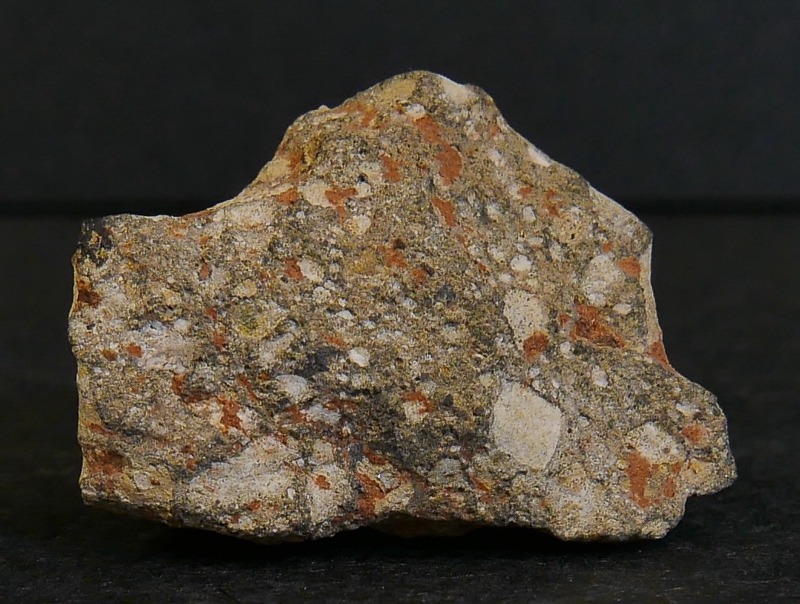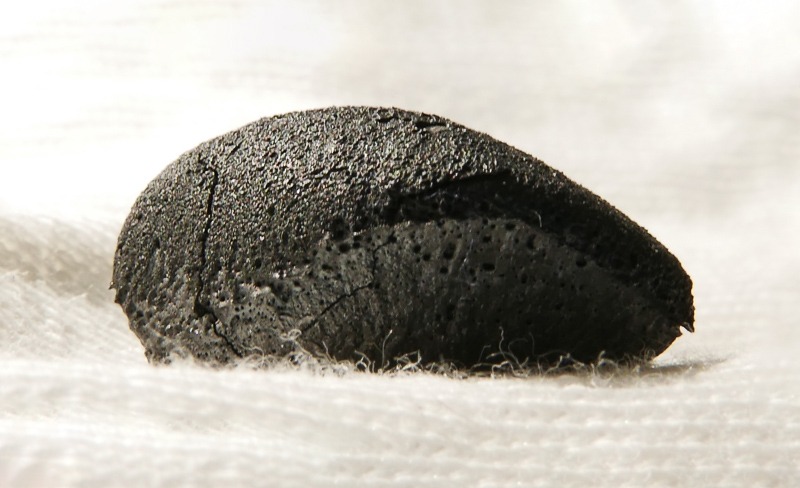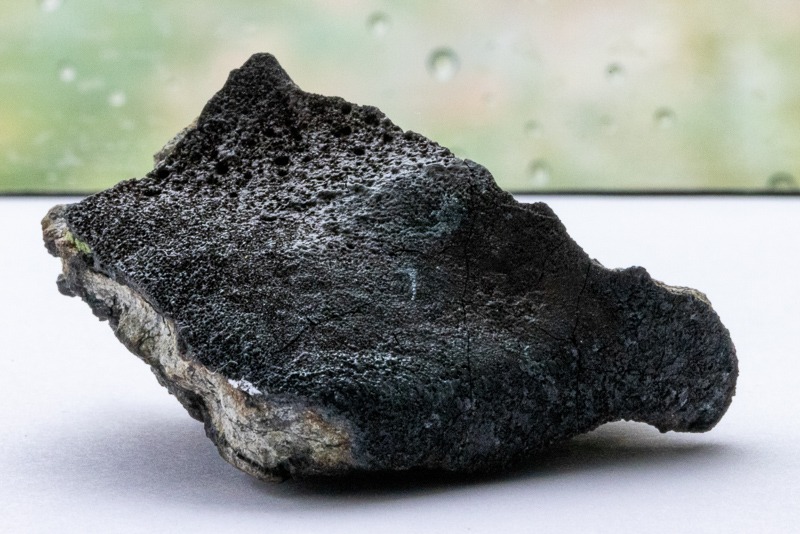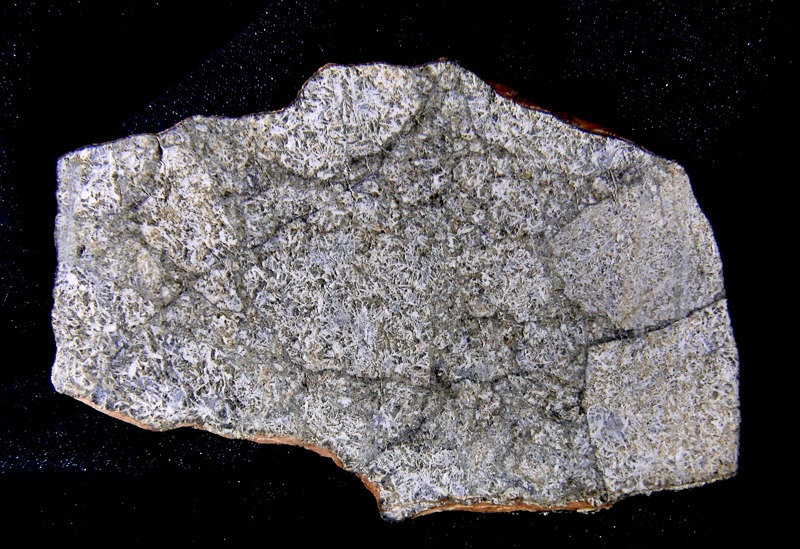Our Extraterrestrial Neighbors
December 22, 2023
By Dr. Rachel L. Smith, Head, Astronomy & Astrophysics Research Lab, Curator of Meteorites. Photos by Rachel Smith and Karen Swain.
This year’s Astronomy Days theme is Asteroids & Meteorites! These exciting space rocks are some of the most primitive relics from the formation of our solar system about 4.6 billion years ago. They are also some of our closest cosmic neighbors, and Earth’s most frequent extraterrestrial visitors.
Most asteroids orbit the Sun between Mars and Jupiter, 300 to 400 million miles from Earth. Historically, asteroids could only be studied remotely with telescopes or satellites, using imaging and spectroscopy to better understand their surfaces and chemical compositions. Now we have a few missions that travel directly to asteroids and their icy counterparts, comets, and bring back to Earth small amounts of pristine material for scientific study.
Read more here on past, present and future missions to small worlds of the solar system.
The most recent sample-return mission is OSIRIS-REx, which successfully delivered about 70 grams of material from the asteroid Bennu to the Utah desert on September 24, 2023. OSIRIS-REx is NASA’s first sample-return mission from an asteroid. Now called OSIRIS-APEx in its second phase, the mission is on its way to explore Apophis, a potentially hazardous asteroid (PHA) predicted to pass within 19,000 miles of Earth in the year 2029. While there is currently little we can do to protect ourselves from PHAs, NASA’s first planetary defense mission, DART, was deliberately crashed into an asteroid on September 26, 2022, to test potential redirection techniques for dangerous objects.
A notable impact occurred on February 15, 2013, when a 20-meter-diameter asteroid fragment — too small to be detected in advance by our current technology — crashed into the Siberian town of Chelyabinsk, Russia. Arriving as a morning fireball, or meteor, and captured on many dashcams and security cameras, this impact resulted in nearly 1,500 non-fatal injuries and damaged 1,700 buildings. It was the first asteroid impact in human history with documented injuries, and a reminder for more urgency in generating impact mitigation strategies.
Learn more about the Chelyabinsk meteor and other asteroid impacts.
Meteorites are the rocky pieces of asteroids that survive passage through our atmosphere and are found on the surface of Earth. They are incredibly valuable to science, holding secrets of the early solar system and formation of planets. Meteorites are studied by planetary scientists, cosmochemists and astrophysicists intent on exploring how our solar system formed, and the chemistry necessary for Earth-like planets and the origin of life.
A few meteorites are from Mars or the Moon and enable detailed studies of these alien worlds. Some of these rare samples are on display in our lunar exhibit and adjacent meteorite gallery on the third floor of the Museum’s Nature Research Center.
As you explore the meteorite gallery, be sure to view the Mysteries of the Moon exhibit. Here you’ll find a lunar meteorite alongside the North Carolina Apollo 17 rock, one of the Goodwill rocks brought back in 1972 by the Apollo 17 astronauts, the last humans to walk on the Moon.
A subset of primitive meteorites contain not only carbon, the vital element for life, but amino acids as well. These complex organic molecules are the building blocks of the proteins required by all life on Earth. First discovered in the Murchison meteorite that fell in Australia in 1969, extraterrestrial amino acids have been discovered inside several very old meteorites, and are evidence that complex molecules needed for life are not unique to Earth.
The Museum recently acquired a sample of Tarda, a meteorite seen to fall over Morocco in 2020. As it plummeted to Earth, a thin layer of Tarda’s surface melted, leaving a fusion crust — the tell-tale marker of a meteorite fall, but rarely preserved from erosion and weathering if not found shortly after impact. Tarda is one of a few meteorites that shows small grooves called flow lines, and other visible scars that partially tell the story of its journey through Earth’s atmosphere. Read here for more on Tarda and similar meteorites.
Be sure to catch Astronomy Days 2024, two days of activities and talks including visiting scientists working on OSIRIS-REx, meteorites, and astrophysics connected to the origin of planets and life!
Highlights of new meteorites in our collection
 Lunar basalt, NWA 11474 in the NCMNS permanent collection. This meteorite is on display in Mysteries of the Moon.
Lunar basalt, NWA 11474 in the NCMNS permanent collection. This meteorite is on display in Mysteries of the Moon.
 Tarda meteorite, NCMNS permanent collection. Tarda is a fragile and primitive meteorite. This specimen has a fusion crust, flow lines and other features from its fall, as well as nickel-iron specks in the interior. This meteorite is currently not on display.
Tarda meteorite, NCMNS permanent collection. Tarda is a fragile and primitive meteorite. This specimen has a fusion crust, flow lines and other features from its fall, as well as nickel-iron specks in the interior. This meteorite is currently not on display.
 Chelyabinsk meteorite, NCMNS permanent collection. This meteorite has a well-preserved fusion crust and cracked interior. This meteorite is currently not on display, but a similar one can be found in our meteorite gallery.
Chelyabinsk meteorite, NCMNS permanent collection. This meteorite has a well-preserved fusion crust and cracked interior. This meteorite is currently not on display, but a similar one can be found in our meteorite gallery.
 Eucrite NWA 5229, one of a few meteorites thought to originate from the asteroid Vesta. This specimen shows large inclusions called clasts that are from the crust of the parent asteroid. This meteorite is currently not on display.
Eucrite NWA 5229, one of a few meteorites thought to originate from the asteroid Vesta. This specimen shows large inclusions called clasts that are from the crust of the parent asteroid. This meteorite is currently not on display.
Acknowledgements: Our purchase of new specimens is made possible by the generous support of the J. Donald Cline Meteorite Collection Endowment. Many of our exhibited specimens are on loan from the J. Donald Cline Meteorite Collection.

